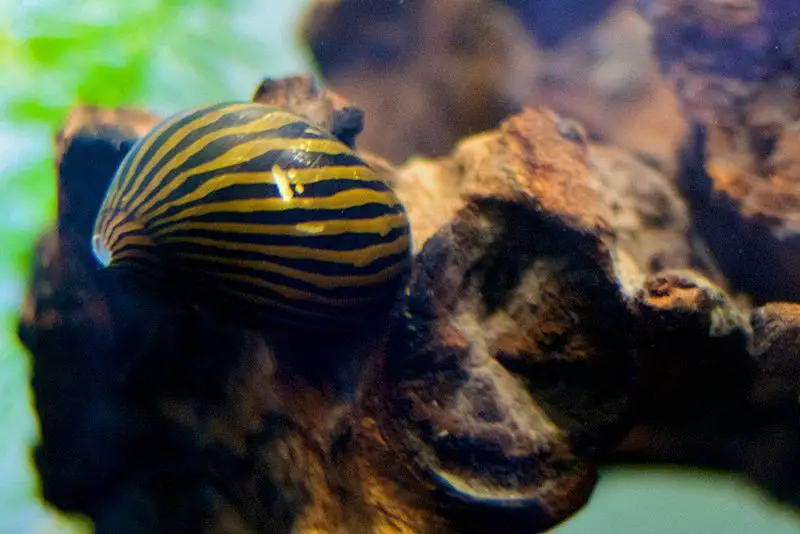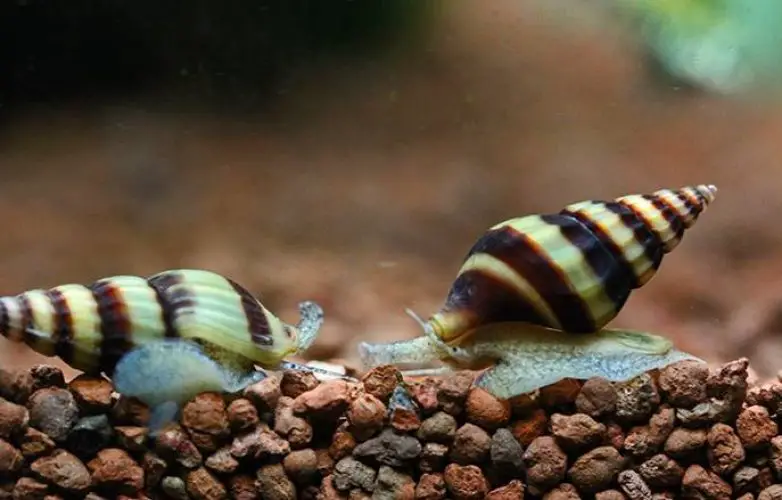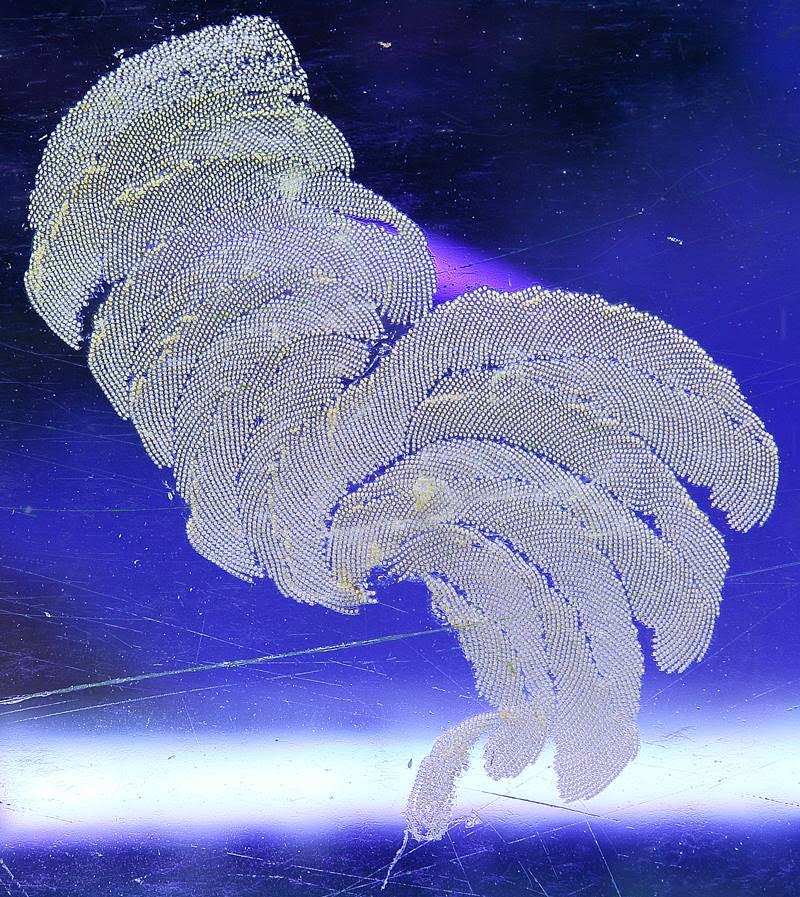It’s something that every aquarium owner dreads: the illness and even death of their aquarium pets. Not only can it be discouraging, especially if you spend a lot of time and energy making sure your aquarium is clean and suitable for your snails and fish, but it can also be worrisome. After all, certain illnesses are contagious and can spread like wildfire through your aquarium.
The three most common signs of a sick snail include:
- Sluggishness/lethargy – this can be difficult to detect with certain nocturnal species of snails, like mystery snails, but if you notice your snail’s lack of energy and activity, it can be a sign of illness.
- Poor appetite – aquatic snails are voracious eaters and will eat a lot every day. If you notice that your snail isn’t eating as much as it used to or at all, this is a sign that something is wrong.
- Appearance of physical symptoms of disease – some illnesses like shell rot or bacterial infections will be obvious.
In this article, we will highlight the various symptoms of sick snails and explore the possible causes. We’ll also discuss how to identify a healthy snail, a dead snail, and even a depressed snail.
How do I know if my snail is dying?
There are several ways to tell a dead snail from a live snail.
Smell
The first sign of a dead snail is the smell. If you suspect your snail is dead, take it out of the tank and smell it. A dead snail smells awful, and there will be no mistaking it for dead.
Lack of movement
Other signs of a dead snail include a lack of movement, especially over a few days and you notice no movement at all. To check whether your snail is dead, see if the snail’s foot retracts. You can do this simply by nudging the shell to provoke movement or picking up the snail.
Loss of operculum
In mystery snails and other certain species, the loss of the operculum (the little lid that closes over the opening of their shell, also commonly called a trapdoor) almost always means that your snail is dead or dying.
Discharge and detached shell
Cloudy discharge is another sign of a dead snail, especially if it is combined with a lack of movement. If you see the snail’s body or foot hanging out of the shell or detached completely from the shell, this is another sign that your snail has died.
Dull shell
Snails’ bodies shrink when they die, which makes the shell lose its luster and appear dull.
My snail is sick: possible causes and solutions
Seeing a dead snail in your tank is not unusual but can be discouraging for any aquarium owner. Like fish, snails can receive a shock entering a new environment and tank community and die. This is why properly acclimating your snail to your aquarium is important.
Disease / Infection
While no particular snail species is especially susceptible to disease, there are several diseases and infections that can plague aquarium snails and spread to the rest of your aquarium species.
These include a number of bacterial infections, parasites such as nematodes or whelks that can drill holes in your snails’ shells, and – especially in wild-caught water snails – schistosomiasis, which spreads through contaminated water and is responsible for millions of human deaths worldwide.
Fortunately, schistosomiasis isn’t a concern in aquarium snails bought from reputable sources.
As with any aquarium species, always place your new snail in a quarantine tank before introducing it to your community tank. Your snail may be carrying disease or bacteria that will make your other aquarium species sick, and quarantining ensures that these sicknesses don’t spread.
Placement
When adding your snail to your community, make sure to place them upright so that your snail can move and find food. It is nearly impossible for snails to turn themselves over when placed upside down, so make sure not to toss your snails into the water without taking the time to properly place them.
Water quality
Snails, like most aquarium species, are sensitive to changes in water and poor water quality. Snails need hard water with calcium to properly maintain and grow their shells, and soft water can cause pitting – a phenomenon caused by low pH and soft water that erodes the snail’s shell.
The ideal calcium hardness in a tank with aquarium snails is 70 – 90 mg/L of calcium. If you live in an area with softer water, don’t panic – there are plenty of ways you can add calcium to your tank, including:
- liquid supplements
- natural sources of calcium (like coral)
- eggshells
- cuttlebones
Be careful not to add too much calcium to your tank however, as scaling can occur and necessitate more frequent filter changes.
Aside from hardness, aquarium snails need a neutral or slightly alkaline pH of between 7 – 8.
Temperature
While this can differ between species of water snails, most varieties thrive in water temperatures between 65 – 83 degrees Fahrenheit. Make sure to research the water needs of your specific snail type for the best temperature.
Why is my snail out of its shell but not moving?
If your snail is out of its shell or appearing nearly out of its shell, your snail is most likely dead. Snails’ bodies shrink when they die, making their bodies detach from the shell.
How do you know if your snail is healthy?
With all the information on how to identify a sick or dead snail, it’s also important to keep tabs on whether your aquatic snail is happy and thriving in your tank community.
An active snail with a voracious appetite is a healthy snail. Other signs of health are a smooth, bright shell devoid of cracks or pits and plenty of movement.
How do you know if a snail is sad?
Like people and other pets, aquarium species are also subject to depression. Overcrowding, a too-small tank, and a lack of stimulation can all contribute to your snail’s mood. And keep in mind that depression and lethargy often pave the way for more serious health problems in your aquarium pets.



